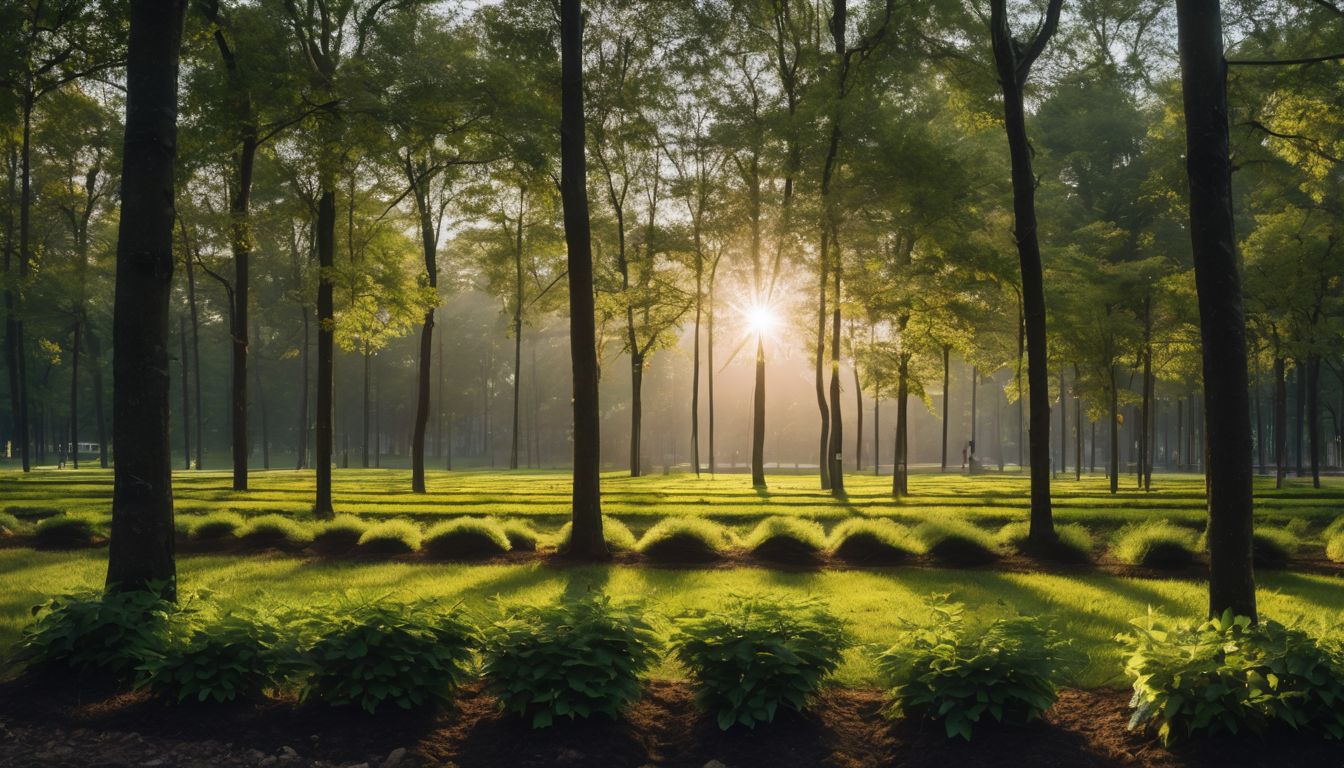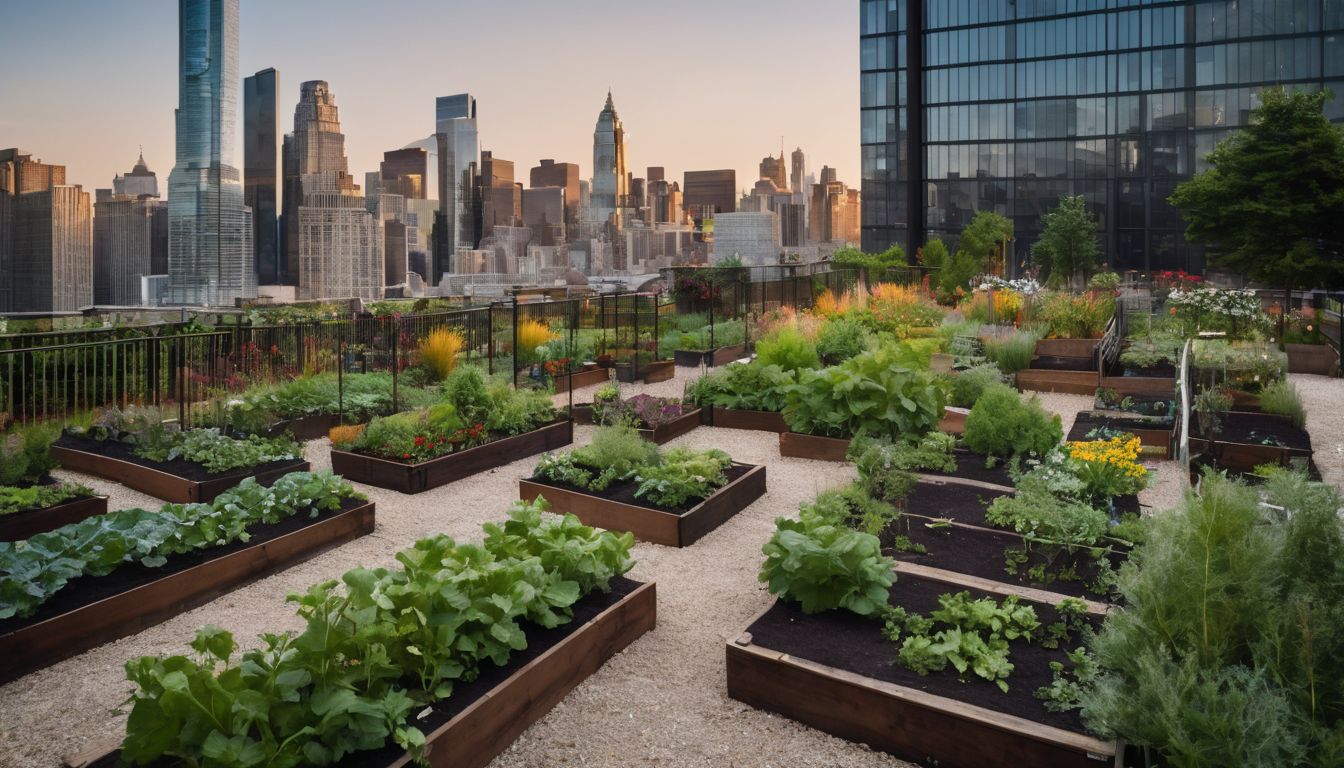Are you keen to combine your love for reading with a passion for the environment? Book clubs have been shown to boost learning and foster community. This post will guide you through establishing a local environmental book club, enriching both your mind and your neighbourhood.
Dive in for eco-inspiration!
Key Takeaways
- Starting a local environmental book club involves setting a clear intention to guide activities and discussions towards enhancing awareness and taking action on sustainability.
- Choose engaging books that explore environmental themes, such as “On Fire: The Burning Case for a Green New Deal” by Naomi Klein or “Braiding Sweetgrass” by Robin Wall Kimmerer, to spark meaningful conversations.
- Recruit members from your community who are passionate about the environment, using platforms like social media or partnering with local organisations to bring people together.
- Establish open – minded discussion guidelines and plan group activities related to conservation, which can deepen understanding of issues discussed in the book club readings.
- Decide on meeting frequency and location that suits all members to maintain consistency and foster an inclusive atmosphere where everyone’s contribution is valued.
Benefits of Joining an Environmental Book Club
Joining an environmental book club allows you to expand your knowledge, connect with like-minded individuals, and take action on important environmental issues. It’s a great way to engage in meaningful discussions and make a positive impact in your community.
Expand your knowledge
Diving into environmental literature can profoundly grow your understanding of eco-friendly practices and conservation efforts. As you explore various authors’ perspectives on sustainability and climate change, you’ll uncover new ideas that may challenge and refine your own thinking.
Each book acts as a gateway to the complexities of our planet’s ecosystem, unravelling the ties between human actions and natural processes.
Engaging with texts about green initiatives and environmental activism equips you with the knowledge needed to make more informed decisions about sustainable living. Not only do these reads provide valuable insights into global environmental issues, but they also inspire practical solutions for local sustainability at home and in your community.
By broadening your horizons through reading, you empower yourself to contribute actively towards a healthier Earth.
Connect with like-minded individuals
Connect with like-minded individuals who share your passion for the environment by joining a local environmental book club. Engage in thoughtful discussions, exchange ideas, and build a community of like-minded people committed to conservation and sustainable living.
Share your knowledge and learn from others while exploring eco-friendly practices through literature.
Ecofriendly reading groups provide an excellent opportunity to connect with your local community and foster meaningful relationships with individuals who are dedicated to environmental education.
Take action on important environmental issues
Connecting with like-minded individuals in an environmental book club helps take action on important environmental issues. Engaging in discussions and activities within the group can lead to practical solutions for local conservation efforts.
Sharing knowledge and experiences fosters a sense of community engagement, inspiring members to implement eco-friendly practices on a broader scale. Being part of this kind of community book club provides ample opportunities to collaborate and make a tangible impact on sustainability efforts in your local area, encouraging others to join the cause.
Participating in an environmental book club not only broadens individual knowledge about conservation but also encourages active involvement in initiatives aimed at environmental protection.
By sharing thoughts and collaborating with others passionate about sustainable living, you can contribute effectively towards advocating for earth-conscious practices within your community.
Steps to Starting a Local Environmental Book Club
Set an intention for the book club, such as promoting environmental awareness or discussing sustainable living. Choose a book club vibe that aligns with your group’s goals and interests, whether it’s casual and relaxed or more structured and educational.
Recruit members who are passionate about environmental issues to join your book club and help spread the word.
Set an intention
Set a clear intention for your local environmental book club. Whether it’s to raise awareness or take action, defining your purpose will guide the club’s activities and discussions.
Encourage members to share their motives and expectations, fostering a united sense of purpose within the group.
Choose a book club vibe
Opt for an inclusive and welcoming atmosphere when establishing your local environmental book club. Encourage diverse perspectives and open-minded discussions to foster a sense of community.
Aim for a relaxed yet purposeful ambiance that promotes meaningful conversations about sustainability, conservation, and eco-friendly practices. Emphasise the importance of mutual respect among members to create an environment conducive to learning and sharing ideas.
Deliberately cultivate a collective passion for environmental literature within your chosen book club vibe. Incorporate elements of nature-inspired decor or sustainable materials into your meeting space to reflect the group’s commitment to living in harmony with the environment.
Recruit members
To build a vibrant local environmental book club, mobilise like-minded individuals who share your passion for nature and conservation. Harness the power of community engagement by reaching out to eco-conscious friends, neighbours, and colleagues.
Seek members from your community with an interest in sustainable living, wildlife conservation, or eco-friendly practices. Utilise social media platforms or local environmental organisations to attract potential members who are keen on engaging in meaningful discussions about environmental literature.
Once you have identified potential members for the book club, emphasise the importance of collaboration and shared values around nature-focused reading material. Encourage diverse perspectives to enrich the group’s discussions and activities focused on promoting green living principles within your community.
Choose a book
Selecting the right book for your local environmental book club is essential to engage and inspire members. Consider thought-provoking non-fiction works like “On Fire: The Burning Case for a Green New Deal” by Naomi Klein, to spark discussions about pressing environmental issues and potential solutions.
Additionally, novels such as “The Overstory: A Novel” by Richard Powers can offer a compelling narrative that prompts reflection on the relationship between humans and nature. Furthermore, “Braiding Sweetgrass: Indigenous Wisdom, Scientific Knowledge and the Teachings of Plants” by Robin Wall Kimmerer provides a unique perspective that blends indigenous wisdom with scientific insights, making it an excellent choice to broaden horizons on sustainable practices and conservation.
To expand your understanding of ecofriendly practices or delve into the complexities of environmental conservation, these suggested reads promise both education and inspiration for your local environmental book club’s members.
Decide on meeting frequency and location
To ensure a smooth flow of discussion and engagement, determining the meeting frequency and location is essential. Consider the schedules of members and opt for a frequency that allows everyone to participate actively.
Selecting a central, accessible location can further encourage attendance and promotes inclusivity within your local environmental book club. This enables all members who are passionate about conservation and eco-living to come together regularly without any barriers.
When arranging meetings, keep in mind factors such as travel time, public transport availability, and the convenience of the venue for all participants. Additionally, having a consistent meeting place fosters familiarity and creates a sense of community among like-minded individuals dedicated to sustainable living.
Set discussion guidelines
Once you have determined the meeting frequency and location, it’s essential to establish clear discussion guidelines for your environmental book club. Encourage members to actively participate in discussions by setting a respectful tone where everyone’s opinions are valued.
Ensure that the discussions are focused on the chosen book and related environmental topics with open-mindedness. Create an environment where people feel comfortable sharing their perspectives, while maintaining a respectful and considerate atmosphere.
Consider using discussion questions to guide conversations and promote insightful exchanges of ideas among members. Avoid dominating discussions and give everyone an opportunity to share their thoughts freely.
Tips for Running a Successful Environmental Book Club
Encourage open-mindedness and respectful discussions to ensure a positive and inclusive atmosphere for all members. Learn more about running a successful environmental book club by reading the full blog post!
Start with introductions and icebreakers
Begin the first meeting of your local environmental book club by initiating introductions and icebreakers. Encourage members to share their names, interests in environmental issues, and favourite nature-based activities.
This allows everyone to get to know each other and creates a welcoming atmosphere that fosters open discussions about the chosen book. Icebreakers like sharing your most beloved outdoor spot or a memorable eco-friendly habit can also spark engaging conversations among members, setting a positive tone for future meetings.
When starting off your club’s first gathering with introductions and icebreakers, it helps establish connections between members and sets an inclusive environment where everyone feels valued for their perspectives on conservation efforts.
Use discussion questions
After breaking the ice and getting to know one another, it’s time to delve into the heart of the matter – using discussion questions. Once everyone is comfortable, steer the conversation by posing thought-provoking queries related to the book.
These questions can range from asking for opinions on specific themes or characters to delving deeper into environmental issues raised in the reading material. Encouraging open dialogue and active participation will ensure that diverse perspectives are shared and valuable insights are gained.
In addition, incorporating discussion questions keeps the conversation focused and ensures that no stone is left unturned. It also helps maintain structure during meetings while allowing for a free flow of ideas.
Encourage open-mindedness and respectful discussions
Foster an environment where diverse perspectives are appreciated, and considerate conversations are valued. Emphasise the importance of active listening and seek to understand differing viewpoints.
Promote inclusivity by ensuring that everyone has a chance to express their thoughts without interruption. Encourage members to approach discussions with empathy and an open heart, recognising that each person’s experiences and beliefs contribute to enriching the conversation.
Promote respectful dialogue by setting clear guidelines for communication within the book club. Encourage participants to express their viewpoints in a constructive manner while acknowledging and respecting others’ opinions.
Plan group activities or outings
Organise nature walks, beach clean-ups, or tree planting days to connect with the environment and fellow book club members. Engage in community volunteering, such as helping at a local wildlife rescue centre or participating in environmental restoration projects.
Foster a sense of shared purpose and camaraderie while actively supporting conservation efforts.
Encourage group activities that align with the themes explored in your readings to deepen understanding and appreciation for nature. Consider partnering with local environmental organisations or attending relevant events together to further enrich discussions and take practical action within the community.
Suggested Book Club Reads
Some great reads for your environmental book club include “On Fire: The Burning Case for a Green New Deal” by Naomi Klein, “Braiding Sweetgrass: Indigenous Wisdom, Scientific Knowledge and the Teachings of Plants” by Robin Wall Kimmerer, and “The Overstory: A Novel” by Richard Powers.
These books offer thought-provoking insights into environmental issues and conservation efforts.
On Fire: The Burning Case for a Green New Deal by Naomi Klein
Naomi Klein’s “On Fire: The Burning Case for a Green New Deal” offers an urgent and compelling call to action. In this book, she delves into the potential of a Green New Deal to tackle the climate crisis while addressing social and economic inequality.
Klein presents a powerful argument for transformative change, urging individuals to become actively engaged in shaping a sustainable future. The book serves as an eye-opening and motivating read for those seeking to understand the interconnectedness of environmental issues and social justice, making it an essential addition to any local environmental book club’s reading list.
– Naomi Klein’s “On Fire: The Burning Case for a Green New Deal” tackles pressing environmental issues with urgency.
Braiding Sweetgrass: Indigenous Wisdom, Scientific Knowledge and the Teachings of Plants by Robin Wall Kimmerer
“Braiding Sweetgrass: Indigenous Wisdom, Scientific Knowledge and the Teachings of Plants”, authored by Robin Wall Kimmerer, intertwines indigenous wisdom with scientific understanding to convey profound lessons about our relationship with nature.
Kimmerer eloquently weaves together stories, botanical knowledge and ecological insights, inviting readers to embrace a deeper connection with the natural world. This book captures the essence of sustainable living and prompts contemplation on humanity’s role in preserving the environment.
Through her evocative prose, Kimmerer imparts invaluable teachings that resonate deeply with those seeking a more holistic and mindful approach to their interaction with the earth.
The Overstory: A Novel by Richard Powers
“The Overstory” by Richard Powers is a thought-provoking novel that delves into the profound connection between humans and trees. This compelling narrative weaves together the lives of nine individuals, each with a deep-rooted passion for forests and environmental conservation.
Through lyrical prose and captivating storytelling, Powers sheds light on the intricate ecosystems of trees and their critical role in sustaining life on Earth. The novel’s exploration of activism, interconnectedness, and resilience will resonate deeply with members of an environmental book club seeking to expand their understanding of nature’s significance.
Powers’ literary masterpiece offers a powerful platform for stimulating discussions on conservation, biodiversity, and humanity’s relationship with the natural world. Its rich tapestry of characters and poignant narratives provides ample material for fostering engaging conversations within an environmentally conscious book club.
Conclusion
In conclusion, starting a local environmental book club is an excellent way to connect with like-minded individuals. By setting an intention and choosing the right book, you can spark meaningful discussions and take action on important environmental issues.
With these steps in mind, you’ll be well-equipped to create a community-driven space for learning and advocating for sustainable living.
FAQs
1. What do I need to start a local environmental book club?
To start an eco-friendly club, you need to choose nature books focused on green living and conservation, gather like-minded individuals, and decide when and where your community club will meet.
2. How can I attract members to my new nature book club?
Promote your green living group through social media, local community boards, or by word of mouth to invite neighbors interested in forming a neighborhood environmental book club.
3. What should we discuss in our conservation book club meetings?
In each meeting of your earth-conscious book club, discuss the themes of your current nature-focused read, share ideas on sustainable living practices and plan eco-friendly activities.
4. Where is the best place to host our sustainable book club gatherings?
Choose a quiet and comfortable spot for hosting your sustainable book club; this could be someone’s home, a local library or community center that supports establishing an environmental reading group.
5. Can anyone set up an environmental reading group?
Absolutely! Anyone motivated about starting a green bookclub can take steps towards setting up an ecofriendly local reading circle – just gather interested folks and dive into books that inspire action on conservation issues.





